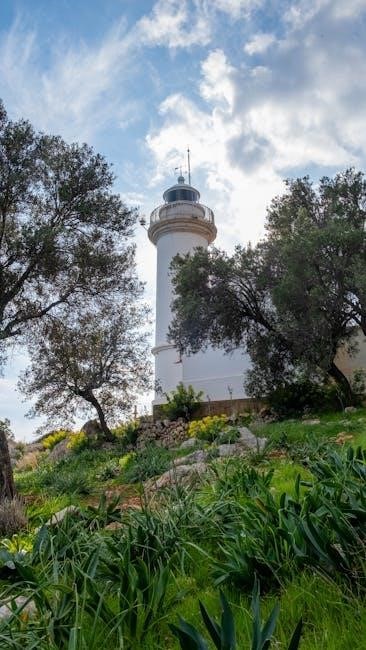
Zone 6b offers a moderate climate with a growing season from mid-April to mid-October. Plant cool-season crops like broccoli and kale in early spring or late summer for a fall harvest. Warm-season crops such as tomatoes and peppers thrive after the last frost. Adjust planting dates based on specific weather patterns and frost risks to optimize yields. Utilize a detailed planting calendar for precise timing and enjoy a bountiful garden year-round.
Zone 6b is a USDA Hardiness Zone characterized by moderate temperatures and a growing season that typically spans from mid-April to mid-October. This zone offers gardeners a balanced climate‚ with warm summers and cool winters‚ making it ideal for a wide variety of plants. The average minimum winter temperature in Zone 6b ranges from -5°F to 0°F‚ which is slightly warmer than Zone 6a. Understanding the unique conditions of Zone 6b is essential for successful gardening‚ as it allows gardeners to choose plants that thrive in this climate and plan their planting schedule accordingly.
Gardeners in Zone 6b can grow both cool-season and warm-season crops‚ but timing is critical. Cool-season plants like broccoli‚ spinach‚ and kale do well in the cooler spring and fall months‚ while warm-season crops such as tomatoes‚ peppers‚ and zucchini require the warmer summer temperatures. By understanding the local frost dates and soil conditions‚ gardeners can optimize their planting strategy and enjoy a bountiful harvest throughout the growing season.
A detailed planting calendar tailored to Zone 6b helps gardeners make the most of their growing season. This guide provides essential insights into when to plant‚ what to plant‚ and how to care for your garden in Zone 6b‚ ensuring a thriving and productive garden year after year.
Understanding Frost Dates in Zone 6b
Frost dates are a critical factor in Zone 6b gardening‚ as they determine the optimal times to plant and protect crops. The average last frost date in Zone 6b is around mid-May‚ while the first frost date typically occurs in early to mid-October. These dates define the boundaries of the growing season‚ which generally lasts from mid-April to mid-October. Understanding these frost dates is essential for timing plantings correctly and avoiding damage to tender plants.
Cool-season crops‚ such as broccoli‚ spinach‚ and carrots‚ should be planted 4-6 weeks before the last frost date to allow them to mature before warmer weather sets in. Conversely‚ warm-season crops like tomatoes‚ peppers‚ and zucchini should be planted after the last frost date to ensure they thrive in the heat. Gardeners should also plan for a second harvest of cool-season crops by planting them 8-10 weeks before the first frost date in fall.
While frost dates provide a general guideline‚ local microclimates and weather variations can shift these dates by a few weeks. Gardeners in Zone 6b should consult local weather data or extension services for precise frost date information to maximize their gardening success. Properly timing plantings based on frost dates is key to a productive and rewarding garden.
Best Vegetables for Zone 6b
Zone 6b offers a versatile climate for growing a wide variety of vegetables. Cool-season crops like spinach‚ lettuce‚ broccoli‚ carrots‚ and beets thrive in the cooler spring and fall temperatures‚ making them ideal for early and late-season plantings. These crops can tolerate light frosts and should be planted 4-6 weeks before the last frost date for a spring harvest or 8-10 weeks before the first frost date for a fall harvest.
Warm-season crops such as tomatoes‚ peppers‚ zucchini‚ cucumbers‚ and green beans excel in Zone 6b’s summer heat. These should be planted after the last frost date to ensure optimal growth. Additionally‚ root vegetables like radishes‚ turnips‚ and potatoes grow well in Zone 6b’s moderate climate. Herbs like basil‚ cilantro‚ and dill also thrive in this zone. By selecting vegetables suited to Zone 6b’s conditions‚ gardeners can enjoy a bountiful harvest throughout the growing season. Always check specific varieties for days to maturity and adjust planting times accordingly to maximize yields.
Planting Calendar for Zone 6b
Zone 6b gardeners can maximize their growing season by following a well-structured planting calendar. The growing season typically begins in mid-April and ends in mid-October. Cool-season crops like spinach‚ lettuce‚ and broccoli should be planted in early spring‚ 4-6 weeks before the last frost date‚ and again in late summer for a fall harvest. Warm-season crops such as tomatoes‚ peppers‚ and zucchini thrive in the warmer months and should be planted after the last frost date‚ usually around late May.
Root vegetables like carrots‚ beets‚ and radishes can be direct-sown in early spring and late summer. Herbs like cilantro and dill also grow well in Zone 6b’s climate. For fall crops‚ plant kale‚ Swiss chard‚ and Brussels sprouts 8-10 weeks before the first frost date. Adjust planting times based on specific weather patterns and frost risks. Using a detailed planting calendar ensures gardeners can make the most of Zone 6b’s moderate growing season and enjoy a diverse harvest throughout the year.
Starting Seeds Indoors vs. Direct Sowing
Deciding between starting seeds indoors and direct sowing is crucial for a successful garden in Zone 6b. Starting seeds indoors allows for an early head start on the growing season‚ especially for crops like tomatoes‚ peppers‚ and eggplants‚ which require a longer maturation period. This method also protects tender plants from unpredictable spring weather and frost. Use seed starting trays or soil blocks with good drainage‚ and provide adequate light‚ such as grow lights‚ to promote healthy growth.
Direct sowing is ideal for hardy crops like carrots‚ radishes‚ and spinach‚ which prefer to germinate in the ground and can tolerate cooler temperatures. Root vegetables‚ in particular‚ often fare better when direct-sown to avoid transplant shock. For Zone 6b‚ start cool-season crops outdoors 4-6 weeks before the last frost date and warm-season crops after the soil has warmed up. Proper timing and soil preparation are key to success with both methods. Balancing indoor starts and direct sowing ensures a diverse and thriving garden throughout the season.
Essential Tools and Equipment for Zone 6b Gardening
Gardening in Zone 6b requires the right tools to maximize efficiency and ensure plant health. A sturdy garden shovel and trowel are must-haves for digging and transplanting. A rake helps prepare soil and remove debris‚ while a watering can or hose with a spray nozzle ensures proper hydration. For pruning and training plants‚ invest in sharp pruning shears and garden gloves for protection.
Indoor seed starting requires seed trays or soil blocks‚ along with grow lights to provide adequate light. A soil test kit helps monitor pH levels‚ and a wheelbarrow or garden cart simplifies transporting plants and materials. For frost protection‚ consider row covers or cold frames to extend the growing season. Having these tools ensures you’re well-equipped to handle Zone 6b’s specific gardening challenges and opportunities.
Soil Preparation Tips for Zone 6b
Preparing the soil is a critical step for a thriving garden in Zone 6b. Start by testing your soil pH to determine if it’s acidic‚ alkaline‚ or neutral. Most vegetables prefer a slightly acidic to neutral soil pH‚ typically between 6.0 and 7.0. Add organic matter like compost or well-rotted manure to improve soil structure and fertility; This is especially important in Zone 6b‚ where the moderate climate can deplete soil nutrients over time.
Till the soil to a depth of 8-10 inches to loosen it and enhance root growth. Incorporate a 2-inch layer of organic mulch or aged manure to retain moisture and suppress weeds. For heavy clay soils‚ mix in perlite or sand to improve drainage. In sandy soils‚ add peat moss to increase water retention. Avoid over-tilling‚ as this can damage soil structure and reduce its water-holding capacity.
Balance your soil with a slow-release fertilizer and ensure proper drainage to prevent waterlogged soil‚ which can lead to root rot. Regularly monitor soil health and adjust as needed to create an optimal growing environment for your plants.
Common Challenges in Zone 6b Gardening
Gardening in Zone 6b comes with its unique set of challenges. One of the primary issues is the region’s unpredictable weather patterns‚ including sudden frosts and heatwaves‚ which can damage sensitive plants. Additionally‚ the moderate growing season length requires careful planning to ensure crops mature before the first fall frost.
Soil degradation is another concern‚ as the region’s fertile soils can be depleted by heavy farming or prolonged gardening. Regular soil testing and replenishment of nutrients are essential to maintain fertility. Pests and diseases‚ such as aphids‚ slugs‚ and powdery mildew‚ thrive in Zone 6b’s climate‚ requiring proactive management strategies like companion planting and crop rotation.
Water management is also a challenge‚ as the area experiences both heavy rainfall and droughts. Proper irrigation systems and mulching techniques can help mitigate these fluctuations. Lastly‚ wildlife like deer and rabbits often encroach on gardens‚ necessitating protective measures such as fencing or repellents. Addressing these challenges ensures a successful and productive gardening experience in Zone 6b.
Monthly Planting Schedule for Zone 6b
A well-structured monthly planting schedule is key to maximizing your garden’s potential in Zone 6b; January and December are ideal for planning and ordering seeds‚ while February and March focus on starting seeds indoors for early spring crops like broccoli and kale.
In April‚ begin direct sowing of cool-season crops such as spinach‚ radishes‚ and carrots. By May‚ after the last frost‚ transition to warm-season crops like tomatoes‚ peppers‚ and zucchini. June and July are prime for maintaining growth‚ pruning‚ and managing pests.

In August‚ sow seeds for fall crops like Brussels sprouts and beets‚ while September and October focus on harvesting and planting garlic‚ onions‚ and spinach for winter. November is for cleaning up the garden and preparing beds for the next season. This schedule ensures a diverse and thriving garden throughout the year in Zone 6b.
Companion Planting in Zone 6b

Companion planting is a strategic way to enhance growth‚ deter pests‚ and improve flavor in your Zone 6b garden. Certain plants naturally benefit from being grown together. For example‚ pairing marigolds with tomatoes repels nematodes‚ while basil planted alongside tomatoes enhances flavor and deters pests.
Nasturtiums and radishes are excellent for repelling cucumber beetles‚ making them perfect companions for cucumbers. Dill and cucumbers also work well together‚ as dill improves cucumber growth and repels aphids. Incorporate flowers like sunflowers and calendula to attract pollinators and beneficial insects.
Herbs such as parsley and cilantro can be interplanted with vegetables to attract pollinators. Avoid pairing members of the Brassica family (like broccoli and kale) with strawberries‚ as they can hinder growth. By thoughtfully selecting companion plants‚ you can create a balanced‚ resilient‚ and productive garden in Zone 6b.
Extending the Growing Season in Zone 6b
Extending the growing season in Zone 6b allows gardeners to enjoy fresh produce beyond the traditional spring and summer months. One effective method is using cold frames or row covers to protect plants from early frosts in fall. These coverings trap heat and shield crops from freezing temperatures‚ enabling harvests to continue well into October.
Another strategy is to utilize greenhouses or hoop houses‚ which provide year-round protection for tender plants. For spring crops‚ start seeds indoors 4-6 weeks before the last frost date and transplant them outside once conditions are favorable. Succession planting also helps maximize the growing season by sowing fast-maturing varieties every 2-3 weeks.

Choosing early-maturing or cool-season crops like spinach‚ kale‚ and radishes is ideal for extending the season. These plants thrive in cooler temperatures and can tolerate light frosts. By combining these techniques‚ gardeners in Zone 6b can enjoy a longer and more productive growing season‚ making the most of their garden space and climate.
Tracking Your Planting Success and Planning for Next Season
Tracking your planting success is essential for refining your gardening strategy each year. Keep a gardening journal to document planting dates‚ weather patterns‚ and crop yields. Note which varieties performed well and those that struggled‚ as this information will guide future planting decisions.
At the end of the growing season‚ evaluate what worked and what didn’t. Consider factors like soil health‚ pest management‚ and disease resistance. Use this data to adjust your planting schedule and techniques for the next year.
Plan ahead by creating a detailed planting calendar for the upcoming season. Order seeds and supplies early‚ and prepare the soil based on lessons learned; Rotate crops to maintain soil fertility and prevent pests. By tracking and planning‚ you’ll improve yields and create a more resilient garden in Zone 6b.

